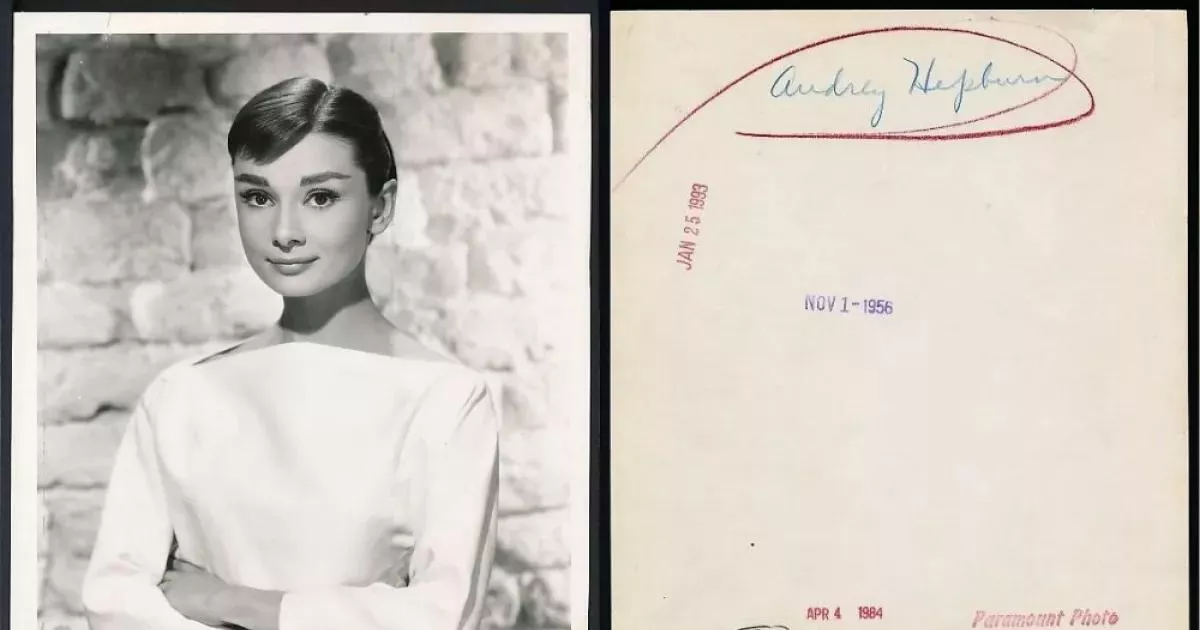Audrey Hepburn, a British actress, achieved iconic status in film and fashion. Celebrated as one of Hollywood's greatest female screen legends by the American Film Institute, she was also inducted into the International Best Dressed Hall of Fame List. Her enduring influence transcends acting, solidifying her position as a cultural figure.
1900: Birth of Baroness Ella van Heemstra
In 1900, Baroness Ella van Heemstra, Audrey Hepburn's mother, was born.
1910: Aarnoud van Heemstra became mayor of Arnhem
In 1910, Aarnoud van Heemstra, Audrey Hepburn's maternal grandfather, became the mayor of Arnhem.
1920: Aarnoud van Heemstra's term as mayor ended
In 1920, Aarnoud van Heemstra's term as mayor of Arnhem ended.
1921: Aarnoud van Heemstra became governor of Dutch Guiana
In 1921, Aarnoud van Heemstra, Audrey Hepburn's maternal grandfather, became the governor of Dutch Guiana.
1923: Joseph Ruston became Honorary British Consul
From 1923 to 1924, Joseph Ruston was an Honorary British Consul in Semarang, Dutch East Indies.
1924: Joseph Ruston was Honorary British Consul
From 1923 to 1924, Joseph Ruston was an Honorary British Consul in Semarang, Dutch East Indies.
1924: Birth of Ian Edgar Bruce Quarles van Ufford
In 1924, Jonkheer Ian Edgar Bruce Quarles van Ufford, Audrey Hepburn's half-brother, was born.
1925: Divorce of Ella van Heemstra and Hendrik Gustaaf Adolf Quarles van Ufford
In 1925, Ella van Heemstra divorced Jonkheer Hendrik Gustaaf Adolf Quarles van Ufford.
1926: Marriage of Hepburn's Parents
In 1926, Audrey Hepburn's parents were married in Batavia.
1928: Aarnoud van Heemstra's term as governor ended
In 1928, Aarnoud van Heemstra's term as governor of Dutch Guiana ended.
May 1929: Audrey Hepburn's Birth
In May 1929, Audrey Kathleen Hepburn (née Ruston) was born. She would later be recognised as a film and fashion icon.
1932: Family Settled in Linkebeek
In 1932, after spending three years travelling, Audrey Hepburn's family settled in the suburban Brussels municipality of Linkebeek.
1935: Father Left the Family
In 1935, Audrey Hepburn's father, Joseph, abruptly left the family after a "scene" in Brussels and moved to London.
1936: Attended boarding school in Kent
In 1936, Audrey Hepburn attended boarding school in Kent.
1937: Sent to School in the UK
In 1937, Audrey Hepburn was sent to live in Kent, United Kingdom, where she was educated at a small private school in Elham.
September 1939: Moved back to Arnhem
In September 1939, after Britain declared war on Germany, Audrey Hepburn's mother moved her back to Arnhem.
1939: Death of Elbrig Willemine Henriette van Asbeck
In 1939, Baroness Elbrig Willemine Henriette van Asbeck, Audrey Hepburn's maternal grandmother, passed away.
1939: Returned to the Netherlands due to WWII
In 1939, with the outbreak of World War II, Audrey Hepburn returned to the Netherlands from boarding school in Kent.
1940: Used the name Edda van Heemstra during the German occupation
After the Germans invaded the Netherlands in 1940, Audrey Hepburn used the name Edda van Heemstra to avoid danger during the German occupation.
1942: Uncle's execution
In 1942, Audrey Hepburn's uncle, Otto van Limburg Stirum, was executed in retaliation for an act of sabotage by the resistance movement.
1944: Performing ballet to support the Dutch resistance
By 1944, Audrey Hepburn was performing ballet to raise money to support the Dutch resistance during World War II.
1944: Dutch Famine
During the 1944-45 Dutch famine, Audrey Hepburn's family resorted to making flour out of tulip bulbs.
October 1945: Ella's Letter Received by Micky Burn
In October 1945, a letter from Audrey Hepburn's mother, Ella, asking for help was received by Micky Burn, who sent cigarettes to sell and buy penicillin.
1945: Moved to Amsterdam and Began Ballet Training
After the war ended in 1945, Audrey Hepburn moved to Amsterdam with her mother and siblings and began ballet training under Sonia Gaskell and Olga Tarasova.
1945: Attended Arnhem Conservatory until 1945
Audrey Hepburn attended the Arnhem Conservatory from 1939 until 1945.
1945: Studied ballet with Sonia Gaskell in Amsterdam
In 1945, Audrey Hepburn studied ballet with Sonia Gaskell in Amsterdam after the war.
1948: Film Debut and Stage Performance
In 1948, Audrey Hepburn made her film debut as a flight stewardess in the Dutch film "Dutch in Seven Lessons" and performed on the British stage in the musical "High Button Shoes".
1948: Film Debut in Seven Lessons
In 1948, Audrey Hepburn made her film debut playing an air stewardess in "Dutch in Seven Lessons", an educational travel film.
1948: Ballet Scholarship and Chorus Girl
In 1948, Audrey Hepburn moved to London on a ballet scholarship with Ballet Rambert and appeared as a chorus girl in the West End musical theatre revue "High Button Shoes".
1948: Studied ballet with Marie Rambert in London
In 1948, Audrey Hepburn studied ballet with Marie Rambert in London.
1949: Chorus girl in Sauce Tartare
In 1949, Audrey Hepburn appeared as a chorus girl in Cecil Landeau's "Sauce Tartare" at the Cambridge Theatre.
1950: Work as a Dancer
In 1950, Audrey Hepburn worked as a dancer in "Summer Nights" at Ciro's London.
September 1951: Screen Test for Roman Holiday
In September 1951, Thorold Dickinson made a screen test with Audrey Hepburn and sent it to William Wyler, who was preparing 'Roman Holiday', leading to interest from Paramount producers.
November 1951: Opening of Gigi on Broadway
In November 1951, Audrey Hepburn's performance in the Broadway play 'Gigi' opened at the Fulton Theatre, receiving praise despite criticisms of the stage version, with 'Life' calling her a "hit" and 'The New York Times' highlighting her winning quality.
1951: Early Film Appearances
In 1951, Audrey Hepburn appeared in the BBC Television play 'The Silent Village' and had minor roles in the films 'One Wild Oat', 'Laughter in Paradise', 'Young Wives' Tale', and 'The Lavender Hill Mob'.
May 1952: Closure of Gigi on Broadway
In May 1952, Audrey Hepburn's Broadway play 'Gigi' closed after 219 performances.
October 1952: Gigi Tour Begins
In October 1952, Audrey Hepburn's tour for the play 'Gigi' began in Pittsburgh.
1952: Engagement to James Hanson
In 1952, Audrey Hepburn became engaged to industrialist James Hanson, but she called off the wedding because she wanted to be really married and their careers would keep them apart. She also dated Michael Butler in the early 1950s.
1952: Major Supporting Role in Secret People
In 1952, Audrey Hepburn was cast in her first major supporting role in Thorold Dickinson's 'Secret People', playing a prodigious ballerina and performing her own dancing sequences.
September 1953: Time Magazine Cover
On September 7, 1953, Audrey Hepburn was featured on the cover of Time magazine, solidifying her rising fame and influence on personal style.
1953: Critical Acclaim and Awards for Roman Holiday
In 1953, Audrey Hepburn gained critical acclaim for her role in 'Roman Holiday', winning an Academy Award for Best Actress, a BAFTA Award for Best British Actress in a Leading Role, and a Golden Globe Award for Best Actress in a Motion Picture – Drama.
1953: Hollywood Debut in Roman Holiday
In 1953, Audrey Hepburn made her Hollywood debut in William Wyler's "Roman Holiday" opposite Gregory Peck, which made her a star and earned her the Academy Award for Best Actress.
1953: Stardom with Roman Holiday and Tony Award for Ondine
In 1953, Audrey Hepburn rose to stardom in the romantic comedy "Roman Holiday" alongside Gregory Peck, winning an Academy Award, a Golden Globe Award, and a BAFTA Award for her performance. She also won a Tony Award for Best Leading Actress in a Play for her performance in "Ondine".
1953: Rise to Stardom with Roman Holiday
In 1953, Audrey Hepburn rose to stardom with her role in "Roman Holiday", presenting an alternative feminine ideal that appealed more to women than men.
1953: Starring Role in Roman Holiday
In 1953, Audrey Hepburn starred in 'Roman Holiday', playing Princess Ann, marking her first leading role and launching her to stardom.
1953: Academy Award for Best Actress
In 1953, Audrey Hepburn won the Academy Award for Best Actress for her performance in "Roman Holiday".
September 1954: Marriage to Mel Ferrer
On September 25, 1954, Audrey Hepburn married American actor Mel Ferrer in Bürgenstock, Switzerland. They met at a cocktail party hosted by Gregory Peck and collaborated on the play "Ondine" before starting a relationship.
1954: Roles in Sabrina and Ondine
In 1954, Audrey Hepburn played a chauffeur's daughter in Billy Wilder's "Sabrina" and garnered the Tony Award for Best Actress in a Play for portraying the titular water nymph in the play "Ondine".
1954: Starring in Sabrina and Awards
In 1954, Audrey Hepburn starred in Billy Wilder's 'Sabrina', earning an Academy Award nomination and winning a BAFTA Award for Best Actress in a Leading Role.
1954: Starred in Sabrina
In 1954, Audrey Hepburn starred in the film "Sabrina" with Humphrey Bogart and William Holden.
1954: Givenchy Designed Wardrobe for Sabrina
In 1954, Hubert de Givenchy was hired to design Audrey Hepburn's on-screen wardrobe for her second Hollywood film, "Sabrina", marking the beginning of a life-long friendship and professional collaboration.
1954: Audrey Hepburn declared the "public embodiment of our new feminine ideal"
In 1954, fashion photographer Cecil Beaton declared Audrey Hepburn the "public embodiment of our new feminine ideal" in Vogue, recognizing her impact on fashion and beauty standards.
1954: Contributed to UNICEF
Since 1954, Audrey Hepburn had contributed to UNICEF.
1955: Golden Globe for World Film Favorite
In 1955, despite having no new film releases, Audrey Hepburn received the Golden Globe for World Film Favorite, recognizing her popularity.
1956: Starring in "War and Peace"
In 1956, Audrey Hepburn and Mel Ferrer starred together in the film "War and Peace".
1956: War and Peace Release
In 1956, Audrey Hepburn starred as Natasha Rostova in 'War and Peace', an adaptation of the Tolstoy novel, which earned her BAFTA and Golden Globe nominations.
1957: Starred in Funny Face
In 1957, Audrey Hepburn starred in the musical "Funny Face," singing her own parts.
1957: Starring in Funny Face and Love in the Afternoon
In 1957, Audrey Hepburn starred in the musical film 'Funny Face' alongside Fred Astaire, and in the romantic comedy 'Love in the Afternoon' with Gary Cooper and Maurice Chevalier.
1957: Costume Design for Multiple Films and Face of L'Interdit
In 1957, Givenchy designed Audrey Hepburn's costumes for "Love in the Afternoon" and "Funny Face", and she also became the face of Givenchy's first perfume, L'Interdit.
1959: Starring in The Nun's Story
In 1959, Audrey Hepburn starred as Sister Luke in 'The Nun's Story', earning her a third Academy Award nomination and a second BAFTA Award.
1959: Insecurity and Inferiority Statements
In a 1959 interview, Audrey Hepburn stated that she felt insecure and inferior, and even hated herself at times, saying that she used her drive and definiteness to conquer these feelings.
June 1960: Birth of Son, Sean Hepburn Ferrer
On June 17, 1960, Audrey Hepburn and Mel Ferrer had their son, Sean Hepburn Ferrer.
1960: Starring in The Unforgiven
In 1960, Audrey Hepburn starred in her only western film, 'The Unforgiven', appearing opposite Burt Lancaster and Lillian Gish.
1960: Baptism of Son Sean Hepburn Ferrer
In 1960, the same pastor who wed Audrey Hepburn and Mel Ferrer baptised their son Sean Hepburn Ferrer.
1961: Starring in The Children's Hour
In 1961, Audrey Hepburn also starred in William Wyler's drama 'The Children's Hour', playing a teacher accused of being a lesbian.
1961: Starring in Breakfast at Tiffany's
In 1961, Audrey Hepburn starred as Holly Golightly in 'Breakfast at Tiffany's', a role that became one of the best-known in American cinema and a defining moment in her career; she was nominated for an Academy Award for her performance.
1961: Addition to the International Best Dressed List
In 1961, Audrey Hepburn was added to the International Best Dressed List, solidifying her status as a style icon known for her minimalistic style.
1961: Costume Design for Breakfast at Tiffany's
In 1961, Givenchy designed Audrey Hepburn's costumes for "Breakfast at Tiffany's".
1963: Starred in Charade
In 1963, Audrey Hepburn starred in the thriller-romance "Charade" opposite Cary Grant.
1963: Costume Design for Charade
In 1963, Givenchy designed Audrey Hepburn's costumes for "Charade".
1964: Release of Paris When It Sizzles
In 1964, 'Paris When It Sizzles', filmed in 1962, was released, receiving negative reviews despite critics being relatively kinder to Audrey Hepburn's performance.
1964: Starred in My Fair Lady
In 1964, Audrey Hepburn starred in the musical "My Fair Lady".
1964: Costume Design for Paris When It Sizzles
In 1964, Givenchy designed Audrey Hepburn's costumes for "Paris When It Sizzles".
1966: Starring in "How to Steal a Million"
In 1966, Audrey Hepburn starred in the heist comedy "How to Steal a Million", playing the daughter of an art collector whose forgeries are about to be exposed. She collaborates with a man played by Peter O'Toole to help her father.
1966: Costume Design for How to Steal a Million
In 1966, Givenchy designed Audrey Hepburn's costumes for "How to Steal a Million".
1967: Shifting Focus to Family
After 1967, Audrey Hepburn began to dedicate more time to her family and acted less frequently.
1967: Roles in "Two for the Road" and "Wait Until Dark"
In 1967, Audrey Hepburn appeared in "Two for the Road", a dramedy about a troubled marriage where she felt freer and happier, and in "Wait Until Dark", a suspense thriller where she played a terrorized blind woman, earning her a final Academy Award nomination.
1967: Starred in Wait Until Dark
In 1967, Audrey Hepburn starred in the thriller "Wait Until Dark", receiving Academy Award, Golden Globe, and BAFTA nominations.
June 1968: Meeting Andrea Dotti
In June 1968, Audrey Hepburn met her second husband, Italian psychiatrist Andrea Dotti, on a Mediterranean cruise with friends.
1968: Divorce from Mel Ferrer
After a 14-year marriage, Audrey Hepburn and Mel Ferrer divorced in 1968. There were rumors that Ferrer was too controlling.
January 1969: Marriage to Andrea Dotti
On January 18, 1969, Audrey Hepburn married Italian psychiatrist Andrea Dotti. She hoped to have more children and possibly stop working.
February 1970: Birth of Son, Luca Andrea Dotti
On February 8, 1970, Audrey Hepburn and Andrea Dotti's son, Luca Andrea Dotti, was born via caesarean section. Hepburn had taken extra care during the pregnancy, resting for months.
1974: Suffering a Miscarriage
In 1974, Audrey Hepburn suffered a miscarriage while married to Andrea Dotti.
1976: Comeback in "Robin and Marian"
In 1976, Audrey Hepburn attempted a comeback in the period piece "Robin and Marian", co-starring with Sean Connery.
1979: Affair During "Bloodline" Filming
In 1979, Audrey Hepburn had an affair with actor Ben Gazzara during the filming of "Bloodline", while married to Andrea Dotti. Dotti was also unfaithful.
1979: Starring in "Bloodline"
In 1979, Audrey Hepburn starred in "Bloodline" with Ben Gazzara, James Mason, and Romy Schneider. The film was an international intrigue amid the jet-set, but it was not successful.
1979: Death of Arnoud Robert Alexander Quarles van Ufford
In 1979, Jonkheer Arnoud Robert Alexander Quarles van Ufford, Audrey Hepburn's half-brother, passed away.
1980: Relationship with Robert Wolders
From 1980, Audrey Hepburn was in a relationship with Dutch actor Robert Wolders, the widower of actress Merle Oberon. They met through a friend.
1980: Death of Joseph Victor Anthony Ruston
In 1980, Joseph Victor Anthony Ruston, Audrey Hepburn's father, passed away.
1981: Leading role in "They All Laughed"
In 1981, Audrey Hepburn played the leading role opposite Ben Gazzara in the comedy "They All Laughed", directed by Peter Bogdanovich. However, the film's release was overshadowed by tragic events and it received a limited release.
1982: Divorce from Andrea Dotti
In 1982, Audrey Hepburn's 12-year marriage to Andrea Dotti was dissolved due to infidelity on both sides.
1984: Death of Baroness Ella van Heemstra
In 1984, Baroness Ella van Heemstra, Audrey Hepburn's mother, passed away.
1987: Co-starring in "Love Among Thieves"
In 1987, Audrey Hepburn co-starred with Robert Wagner in the made-for-television caper film, "Love Among Thieves".
August 1988: Immunisation Campaign in Turkey
In August 1988, Audrey Hepburn participated in an immunisation campaign in Turkey, praising it as an example of UNICEF's capabilities, where the army and fishmongers provided assistance for vaccine distribution.
1988: Worked in impoverished communities
From 1988, Audrey Hepburn devoted much of her time to UNICEF, working in some of the poorest communities of Africa, South America, and Asia.
1988: UNICEF field mission to Ethiopia
In 1988, Audrey Hepburn made her first field mission for UNICEF in Ethiopia, visiting an orphanage in Mek'ele and arranging for UNICEF to send food.
February 1989: Tour of Central America
In February 1989, Audrey Hepburn toured Central America, meeting with leaders in Honduras, El Salvador, and Guatemala in her role as a UNICEF Goodwill Ambassador.
October 1989: Visit to Bangladesh
In October 1989, Audrey Hepburn visited Bangladesh with Robert Wolders. During her visit, she showed remarkable compassion towards the children, hugging them despite the presence of flies and dirt.
1989: Happiest Years with Robert Wolders
In 1989, Audrey Hepburn described the nine years she had spent with Robert Wolders as the happiest years of her life, stating that she considered them married, just not officially.
1989: Final Motion Picture Role in "Always"
In 1989, Audrey Hepburn had her last motion picture role with a cameo appearance as an angel in Steven Spielberg's "Always".
1989: Attainable Look Statement
In 1989, Audrey Hepburn stated that "my look is attainable", suggesting women could emulate her style by flipping out their hair, buying large glasses, and wearing little sleeveless dresses.
1989: Appointment as UNICEF Goodwill Ambassador
In 1989, Audrey Hepburn was appointed a Goodwill Ambassador of UNICEF, expressing her gratitude for the international aid she received as a child during the German occupation.
October 1990: UNICEF Mission to Vietnam
In October 1990, Audrey Hepburn traveled to Vietnam as part of her work with UNICEF, collaborating with the government on national immunization and clean water programs.
1990: Gardens of the World with Audrey Hepburn
In 1990, Audrey Hepburn's last recorded performance was in the documentary television series "Gardens of the World with Audrey Hepburn", for which she won a Primetime Emmy Award.
March 1991: "Gardens of the World" Special
In March 1991, a one-hour special of "Gardens of the World with Audrey Hepburn" preceded the series.
1991: Film Society of Lincoln Center tribute
In 1991, Audrey Hepburn received a tribute from the Film Society of Lincoln Center, recognizing her contributions to the film industry.
September 1992: Visit to Somalia with UNICEF
In September 1992, four months before her death, Audrey Hepburn visited Somalia with UNICEF. She described the situation there as "apocalyptic" and worse than any famine she had witnessed before.
September 1992: Development of Abdominal Pain
In late September 1992, upon returning to Switzerland from Somalia, Audrey Hepburn developed abdominal pain, leading to the discovery of a rare form of abdominal cancer.
December 1992: Received US Presidential Medal of Freedom
In December 1992, Audrey Hepburn received the US Presidential Medal of Freedom in recognition of her work as a UNICEF Goodwill Ambassador.
1992: BAFTA Special Award
In 1992, Audrey Hepburn received a BAFTA Special Award.
1992: BAFTA Lifetime Achievement Award
In 1992, Audrey Hepburn received the BAFTA Lifetime Achievement Award, honoring her significant contributions to film.
1992: Recording "Audrey Hepburn's Enchanted Tales"
In 1992, Audrey Hepburn recorded a spoken word album, "Audrey Hepburn's Enchanted Tales", featuring readings of classic children's stories.
January 1993: Death of Audrey Hepburn
In January 1993, Audrey Hepburn died, leaving behind a legacy as a film and fashion icon.
January 1993: PBS Premiere and Funeral
On January 24, 1993, the day of Audrey Hepburn's funeral services in Tolochenaz, her series "Gardens of the World" premiered on PBS. She was posthumously awarded an Emmy for the "Flower Gardens" episode.
1993: Increased Admiration After Death
After Audrey Hepburn's death in 1993, she became increasingly admired, with magazines advising readers on how to get her look and fashion designers using her as inspiration.
1993: Relationship with Robert Wolders until Death
Audrey Hepburn was in a relationship with Robert Wolders from 1980 until her death in 1993.
1993: Jean Hersholt Humanitarian Award
In 1993, Audrey Hepburn was posthumously awarded the Jean Hersholt Humanitarian Award for her humanitarian work.
1993: Founding of Audrey Hepburn Children's Fund
In 1993, a year after Audrey Hepburn's death, her son Sean Ferrer founded the Audrey Hepburn Children's Fund (originally named Hollywood for Children Inc.) to continue her humanitarian work.
1994: Posthumous Grammy Award for Audrey Hepburn's Enchanted Tales
In 1994, Audrey Hepburn's contributions to the spoken-word recording "Audrey Hepburn's Enchanted Tales" earned her a posthumous Grammy Award for Best Spoken Word Album for Children.
1999: Publication of Audrey's Style
In 1999, HarperCollins published "Audrey's Style" by Pamela Keogh, a 340-page book devoted to Audrey Hepburn's personality, beliefs, and style, featuring interviews and rarely seen photographs.
2000: The Audrey Hepburn Story Dramatisation
In 2000, a dramatization of Audrey Hepburn's life, titled "The Audrey Hepburn Story", was released, starring Jennifer Love Hewitt as the older Hepburn and Emmy Rossum as the younger Hepburn.
2002: Unveiling of "The Spirit of Audrey" statue
In 2002, at the United Nations Special Session on Children, UNICEF honored Audrey Hepburn's humanitarian legacy by unveiling a statue called "The Spirit of Audrey" at UNICEF's New York headquarters.
2006: Gap Commercial Featuring Hepburn
In 2006, Audrey Hepburn was featured in a Gap commercial that used clips of her dancing from "Funny Face", set to AC/DC's "Back in Black", with the tagline "It's Back – The Skinny Black Pant".
2006: Little Black Dress Auction
In 2006, one of the "little black dresses" designed by Givenchy for Breakfast at Tiffany's was sold by Christie's for a record sum of £467,200.
January 2009: Named one of the top British actresses of all time
In January 2009, Audrey Hepburn was named on The Times' list of the top 10 British actresses of all time, cementing her legacy as a prominent figure in film.
2010: Opinions on Acting Abilities
In 2010, Emma Thompson expressed the opinion that Audrey Hepburn "can't sing and she can't really act", sparking debate and varying opinions on Hepburn's acting abilities.
2010: Death of Ian Edgar Bruce Quarles van Ufford
In 2010, Jonkheer Ian Edgar Bruce Quarles van Ufford, Audrey Hepburn's half-brother, passed away.
2012: Appearance on Sgt. Pepper's Lonely Hearts Club Band album cover
In 2012, Audrey Hepburn was selected by artist Sir Peter Blake to appear in a new version of the Beatles' Sgt. Pepper's Lonely Hearts Club Band album cover, celebrating British cultural figures.
2012: Ferrer's Resignation from the Audrey Hepburn Children's Fund
In 2012, Sean Ferrer resigned as Chairman of the Audrey Hepburn Children's Fund, turning over the position to Luca Dotti.
2013: Galaxy Chocolate Advert
In 2013, a computer-manipulated representation of Audrey Hepburn was used in a television advertisement for the British chocolate bar Galaxy.
May 2014: Google Doodle for 85th Birthday
On May 4, 2014, Google featured a doodle on its homepage in honor of what would have been Audrey Hepburn's 85th birthday.
2014: Sean Ferrer became the rare disease ambassador
Since 2014, Sean Ferrer became the rare disease ambassador on behalf of European Organisation for Rare Diseases.
2015: Most Stylish Brit of All Time
In 2015, Audrey Hepburn was voted "the most stylish Brit of all time" in a poll commissioned by Samsung, highlighting her lasting influence on fashion.
2015: Sean Ferrer was the rare disease ambassador
In 2015, Sean Ferrer was the rare disease ambassador on behalf of European Organisation for Rare Diseases.
2016: Airborne Museum Report
In 2016, the Airborne Museum 'Hartenstein' reported that, after extensive research, it had not found any evidence of Audrey Hepburn's participation in the Dutch resistance itself.
October 2017: Ferrer Sued by Audrey Hepburn Children's Fund
In October 2017, Sean Ferrer was sued by the Audrey Hepburn Children's Fund for alleged self-serving conduct.
March 2018: Dismissal of Ferrer's Suit Against the Fund
In March 2018, Sean Ferrer's suit against the Audrey Hepburn Children's Fund was dismissed due to the complaint's failure to include Luca Dotti as a defendant.
2019: Robert Matzen's Book Provided Evidence of Resistance Support
In 2019, Robert Matzen's book provided evidence that Audrey Hepburn had supported the resistance by giving "underground concerts", delivering the underground newspaper, and taking messages and food to downed Allied flyers.
2019: Court Sided with Ferrer
In 2019, the court sided with Sean Ferrer, ruling that the Audrey Hepburn Children's Fund did not have the independent right to use Audrey Hepburn's name and likeness, or to enter into contracts with third parties without Ferrer's consent.
2020: Release of Biographical Documentary Audrey
In 2020, a biographical documentary about Audrey Hepburn's life, titled "Audrey", directed by Helena Coan and produced with the help of her son and granddaughter, Sean and Emma Ferrer, was released to positive reception.
Mentioned in this timeline
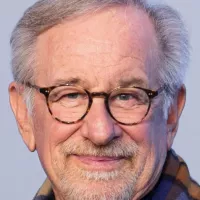
Steven Spielberg is a highly influential American filmmaker recognized as...

Google LLC is a multinational technology company specializing in online...

Samsung Group is a South Korean multinational manufacturing conglomerate and...
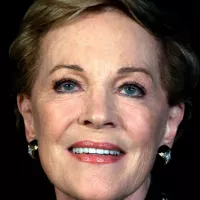
Dame Julie Andrews is a highly acclaimed English actress singer...
Germany officially the Federal Republic of Germany is a Western...
Africa is the second-largest and second-most populous continent comprising of...
Trending

Simon Cowell is a prominent English television personality and businessman recognized for his role as a judge on various talent...
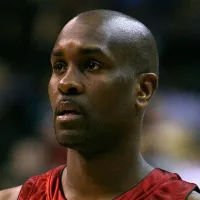
7 months ago Gary Payton Reflects on Jordan Matchup and Hypothetical Stats in Today's NBA

11 days ago Spurs Defeat Nuggets in Thrilling Game, Mavericks Face Nuggets
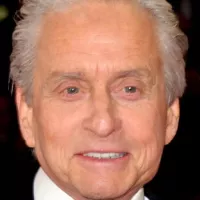
22 days ago Michael Douglas and Catherine Zeta-Jones Celebrate 25 Years of Marriage with Throwbacks
Luke Kornet is an American professional basketball player currently playing for the San Antonio Spurs in the NBA He's a...

6 months ago Jack Black's Minecraft Movie Sets Premiere on HBO Max, June 20, 2025
Popular

Candace Owens is an American conservative political commentator and author...

Ilhan Omar is an American politician currently serving as the...

XXXTentacion born Jahseh Dwayne Ricardo Onfroy was a controversial yet...

Tom Cotton is an American politician and Army veteran currently...
The Kennedy Center Honors are annual awards recognizing individuals and...

Kelsey Grammer is an accomplished American actor producer and singer...
